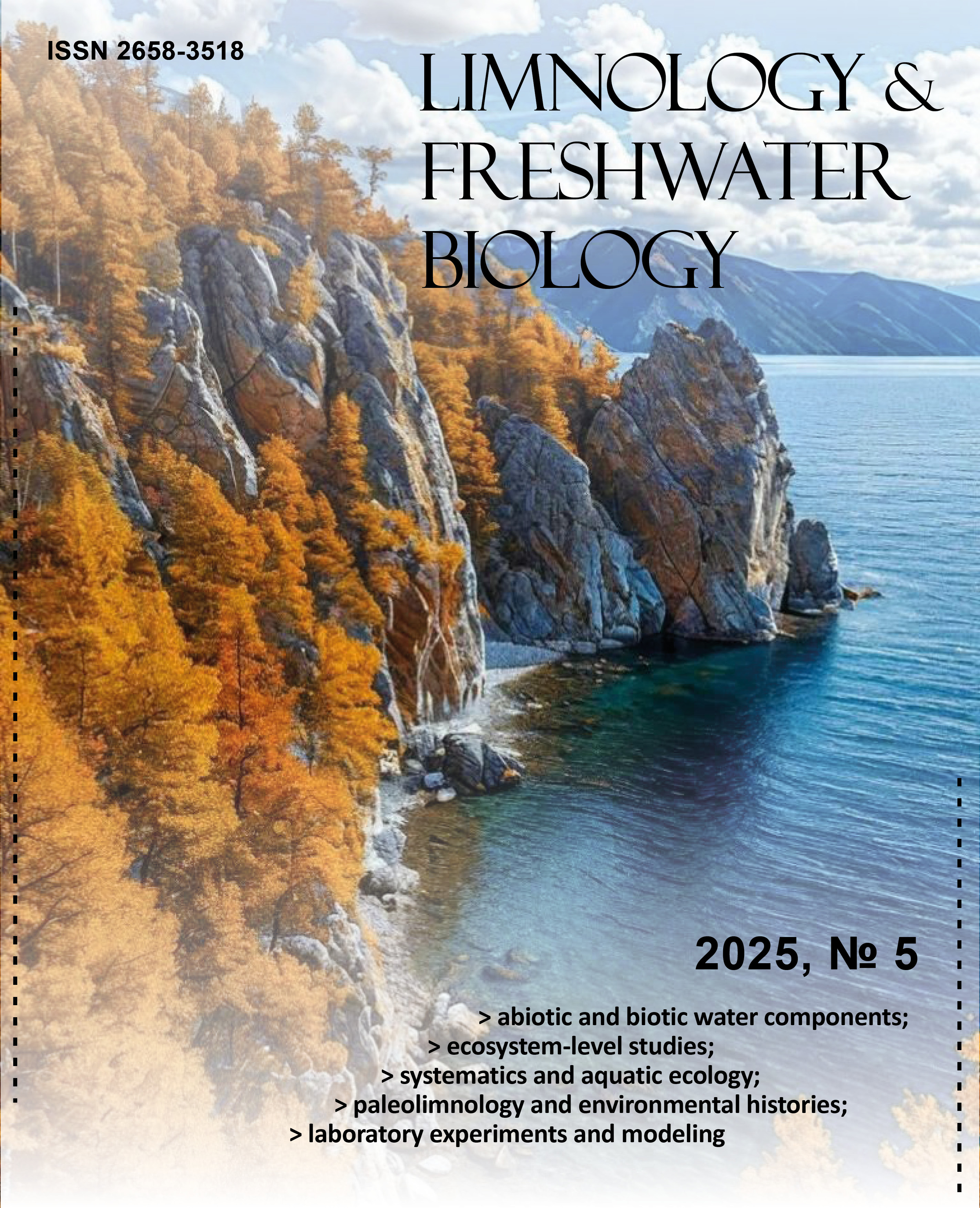The effect of sample volume and number of reads on the sequencing result of a microeukaryotic community from an oligotrophic lake
DOI:
https://doi.org/10.31951/2658-3518-2025-A-5-1212Keywords:
diversity, sample volume, sequencing depth, metabarcoding, 18S rRNA, Lake BaikalAbstract
Microeukaryotes are an important component in aquatic ecosystems and can be used as an indicator of environmental conditions. Changes in their abundance or diversity can indicate changes in the habitat. In the last decade to addition to light microscopy method, DNA metabarcoding is used a monitoring of microeukaryote community. In order to optimise the metabarcoding method, it is important to determine the necessary sample volume and sequencing depth. This study compared samples with different filtered water volumes (50, 10 and 1.2 L) and sequencing depths to determine their impact on the diversity and taxonomic composition of the unicellular microeukaryotic community in Lake Baikal. ANOSIM analysis revealed similarity among samples with different filtered volumes. This suggests that a small filtered sample volume (1.2 L) is sufficient to reveal a high diversity of taxa in an oligotrophic reservoir, comparable to that obtained with a larger filter volume (50 L). Ciliophora species were detected the highest number of reads by metabarcoding at the large volume of filtered sample (50 L), while diatoms and green algae were better read in smaller volumes (10 and 1.2 L). It is seems that samples volumes in 10 and 1.2 L are sufficient for microalgae monitoring. Samples with different sequencing depths produced similar results in the characterisation of dominant species. Differences were observed in minor taxa, some of which were only detected with a higher number of reads. These results are important for improving the monitoring of oligotrophic bodies using metabarcoding.
Downloads
Published
Issue
Section
License
Copyright (c) 2025 Limnology and Freshwater Biology

This work is licensed under a Creative Commons Attribution-NonCommercial 4.0 International License.

This work is distributed under the Creative Commons Attribution-NonCommercial 4.0 International License.







